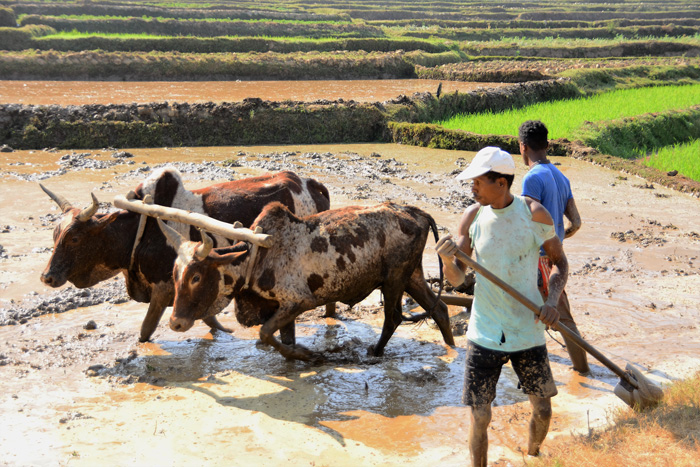Arriving on the island from India in the first millennium, the zebu is an imposing bovid, with lyre-shaped horns on its frontal bone and a distinctive dorsal hump, a fat reserve that builds up when food is plentiful. It occupies a central place in Madagascan culture. Much more than a simple livestock animal, the zebu is a true cultural and spiritual icon in Madagascar, reflecting the identity, traditions and ancestral beliefs of the Malagasy people.
Symbol of wealth and social status:
In Malagasy culture, acquired over the past millennia and perhaps derived from Indian culture where zebus are considered sacred, owning zebus in Madagascar is a sign of wealth and prestige. The more zebus a family owns, the higher its social status. These animals are often offered as dowries at weddings, serving to seal family and community alliances, and as objects of sacrifice or exchange with the spirits for specific rituals or during sacred ceremonies. Zebus are also used as currency in economic transactions. In addition, for many families in rural Madagascar, the zebu is a form of long-term investment. Many families invest all their money and savings to acquire zebus, but are often victims of zebu theft by Dahalo, sometimes leaving entire villages with nothing.
Role in rituals and ceremonies:
Zebus are omnipresent and play a crucial role in Malagasy rituals and ceremonies. At funerals, for example, the sacrifice of zebus is common, allowing the spirits of the deceased to rejoin the world of the ancestors. Another practice, called “famadihana” or turning of the dead, is a highlight of Malagasy culture, when the bones of ancestors are exhumed, wrapped in new shrouds and honored with zebu sacrifices.
Circumcision ceremonies, rites of passage and community festivals are all marked by zebu sacrifices. These events strengthen social ties and perpetuate ancestral traditions, illustrating the importance of zebus in maintaining community cohesion and cultural values.
The Zebu in Malagasy agriculture and daily life :
Apart from their symbolic role, zebus are indispensable to the agricultural economy. Due to a lack of resources and lagging technological development, zebus are used to plough fields in the traditional way, transport goods tied to the front of carts, and provide milk and meat. Zebu skin is also used to make a variety of handicrafts, including drums, shoes and bags.
Malagasy farmers rely heavily on zebus for agricultural work, especially in rice fields, where they help prepare the soil for planting. Their robustness and ability to withstand harsh climatic conditions make them invaluable allies for farmers.
Zebu and the environment :
Zebu farming also has an impact on Madagascar’s environment. The extensive rearing of these animals influences the management of land and natural resources. Traditional animal husbandry and grazing practices have shaped the island’s rural landscapes, creating a balance between the needs of human communities and the preservation of ecosystems.
The zebu is much more than an animal in Madagascar; it is a living symbol of the Malagasy people’s cultural heritage, identity and traditions. Through its multiple social, economic, ritual and ecological roles, the zebu embodies the depth and richness of Malagasy culture. Its presence continues to influence and give rhythm to the lives of communities across the island, making the zebu an essential pillar of Malagasy society.






